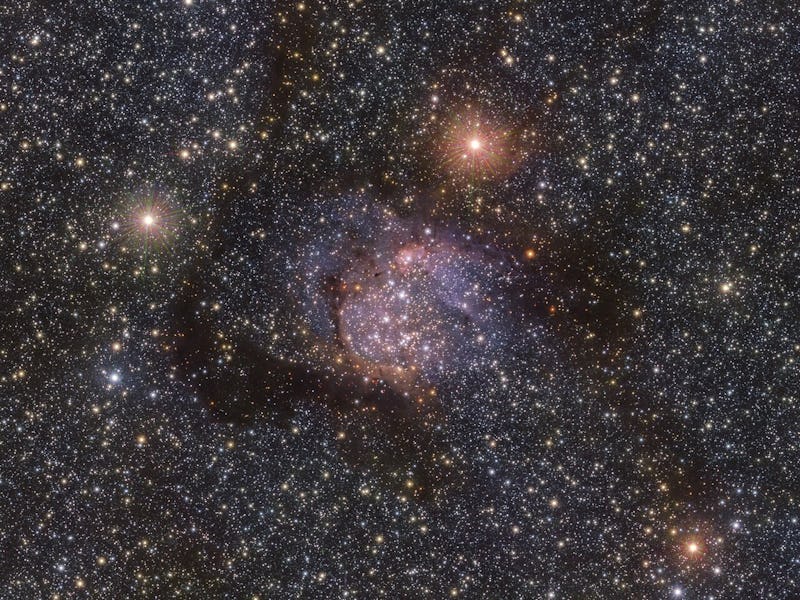Dazzling! New image unmasks a nebula to reveal hidden stars
The VISTA telescope captured a glittering scene and a nebula 6,000 light-years away.

A curtain lifted when the VISTA telescope in Cerro Paranal, Chile, looked at the Sh2-54 nebula in the Serpens constellation. Once-hidden stars come into view.
Look up, and it’s easy to get lost. So skygazers have devised ways to make the cosmos more digestible. Coordinates, for instance, make it easy to pinpoint the source of meteor showers or where to find a planet. The downside is it can lead to a two-dimensional default interpretation of the night sky.
But sensitive telescopes change all that. A new image from VISTA — short for Visible and Infrared Survey Telescope for Astronomy — renders the depths of the night sky. And by doing so, VISTA shows that the Universe is more than a flat canvas.
First appearances often tell an incomplete story.
The Sh2-54 nebula. This image comes from the Visible and Infrared Survey Telescope for Astronomy (VISTA) telescope of the European Southern Observatory. VISTA is located in northern Chile.
For instance, visible light is easily absorbed when radiating into the dust clouds of nebulas, gorgeous cocoons abundant with star-making material. So, little makes it to Earth. That’s where VISTA comes in handy. It collects wavelengths longer than visible light, called infrared, to detect obscured information. In this case, it’s revealed stars behind an interstellar shroud in Sh2-54, a nebula located 6,000 light-years away in Serpens, near the constellation Sagittarius.
“Infrared light can pass through the thick layers of dust almost unimpeded,” officials from VISTA’s parent organization, the European Southern Observatory, write in a description of a dazzling new image. “A myriad of stars is revealed behind the faint orange glow,” they add.
VISTA benefits from the dry climate of Chile’s Atacama Desert and its perch atop the 2,635-meter elevation Paranal Observatory. From there, it observes pockets of the Milky Way galaxy with less obstruction from Earth’s atmosphere. Its 67-million-pixel camera then soaks up infrared radiation from beautiful places like Sh2-54.
A visible light image of Sh2-54. The image comes from the Very Large Telescope (VLT). It is located at ESO’s Paranal Observatory in Chile, like VISTA.
With this information, astronomers can learn more about how stars evolve within our galaxy. VISTA is also busy learning about other places, too. It also peers into two satellite galaxies of the Milky Way called the Small and Large Magellanic Clouds. It also looks much farther away, into extragalactic space. All in all, VISTA generates about 315 GB of data each night, which ESO officials say is “equivalent to 13 high definition Blu-ray discs!”
For more proof of how essential infrared observations have become to modern astronomy, look no further than the James Webb Space Telescope. Its infrared kit has looked at the Pillars of Creation, hidden stars in the Southern Ring Nebula, and the spokes of the Cartwheel Galaxy, to name just a few.
Webb and VISTA prove that, with infrared, there's often more to see.